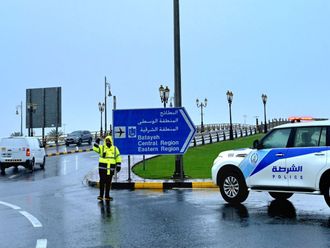Al Ain: With the heatwave setting new records this summer, forecasters expect no significant change in August in weather conditions across the country and much of the Arabian region.
The mercury is likely to hover around 46 degrees Celsius in the hottest hours of the days with an increased level of humidity at evening and early morning, according to the National Centre of Meteorology and Seismology (NCMS).
August is one of the hottest months of the season that brings outdoor activities down to a minimum. The month of Ramadan falling in August has further affected outdoor activities, with streets, roads and commercial centres wearing a deserted looks at around mid-day.
UAE climatologists said July was the hottest month in the last nine years. The highest temperature recorded was 50.4 Celsius in Suweihan, a town some 70km in the west of Al Ain, on July 20. This was the highest temperature recorded since 2003 when the mercury touched the 52.1 C mark in the Western Region of Abu Dhabi.
The fiercely hot conditions of July, according to the NCMS, are likely to extend into August with the maximum high temperature ranging from 36 to 46 degrees Celsius. Hot southern and south-easterly winds will blow occasionally and push the mercury significantly high at times in some areas.
Forecasters said these winds come from the Empty Quarter where seasonal heat cyclones are a normal event. The winds are also likely to kick up dust and sand in the internal and open areas of the country. It could reduce horizontal visibility, said the forecasters.
NCMS records show the highest temperature of 50C in August was recorded two years ago (2010) in Al Jazeerah, a town located close to the Saudi Arabian border in the Western Region of Abu Dhabi. The lowest ever documented temperature in August was just 17.8C in 2008 at Jebel Jais in Ras Al Khaimah.
August is also known for high humidity levels due to north-westerly winds. These winds blow most days and bring in moisture from the Arabian Gulf. The average wind speed remains at around 12km/h.
The centre said average relative humidity is likely to be 53 per cent reaching its maximum levels in the morning and evening, especially during the second half of this month.
The weather bureau said the UAE and its neighbouring areas have also been affected by seasonal low pressure areas and moist air which move towards the eastern parts of the Emirates. This results in the development of cumulus clouds that cause occasional thunderstorms and rain in these areas. These also extend to some of the internal areas and influence parts of Ras Al Khaimah, Dubai, Sharjah, and Abu Dhabi.
In August, the highest amount of rainfall of 86.5mm was recorded in 1975 in Al Brirat area.












